Light Your Landscape for Drama and Function
In the spectrum of home improvement, landscape lighting might be the most overlooked. It is, however, one of the least-obstructive design projects you can undertake. You won’t have to move out or do without the kitchen, be limited to the use of just one bathroom or be constantly cleaning up construction debris. Any work conveniently takes place outdoors.
While the implementation of the project can be easier to cope with, the complexity and expense will vary greatly depending on your preferences. You may have a beautiful old oak tree in your front yard, and adding a strategically placed floodlight would be enough. Or you may have a large sloping site with many different elements that need attention, so you may want to involve a professional landscape architect.
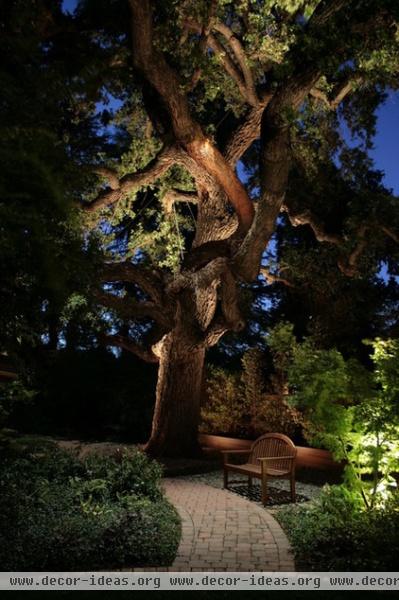
Significant trees take command of a landscape during the day. Once night falls, they disappear into the darkness unless appropriately placed lighting illuminates them. The effects can be remarkable. Whether underlit, flooded from one side or lit from fixtures mounted to branches, the features of the tree take on an extraordinary appearance when highlighted with light.
Landscape lighting can be installed quickly compared to other projects. You can get your oak tree lit up in an afternoon. Professional installations usually take a few days. Factor in design time of at least a month.
Who to hire: Lighting up a single tree or placing path lights along an entry walk can be DIY projects. A landscape service can often install landscape lighting as well. Large properties with multiple areas and features might need a landscape architect or a landscape lighting designer.
Cost: Weekend warriors can probably make a small project come in under $1,000. But while some landscape lighting can be simple to install, there seems to be little middle ground. If you cross over to having the landscape lighting designed and installed for you, the cost will jump dramatically. Expect to spend between $10,000 and $20,000 for a sophisticated, professionally designed and installed system.
Permit: Simpler projects may not need permits, but this is an area dealing with electricity, and proper installation is mandatory. If the new system connects or plugs into existing electrical systems, it is unlikely that a permit is necessary. But if it requires wiring or rewiring of any kind, it’s best to call in professionals.
Best time to do this project: Spring and summer, unless you live in a mild climate; then anytime should work.
Find landscape architects and landscape lighting designers.
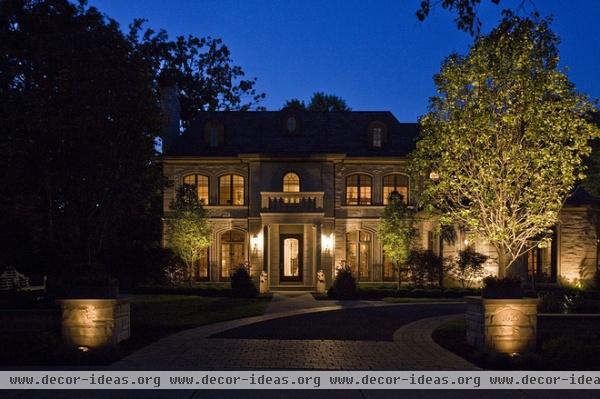
Reasons to Light Up Your Landscape
Define an entry. The pedestals defining this driveway entrance would be lost in the dark. A spotlight on both sides not only illuminates the address on the right, but makes a statement that there is much more to see beyond the entrance. Notice here that the smaller trees are highlighted and the other landscape lights graze the highly detailed elevation of the house.
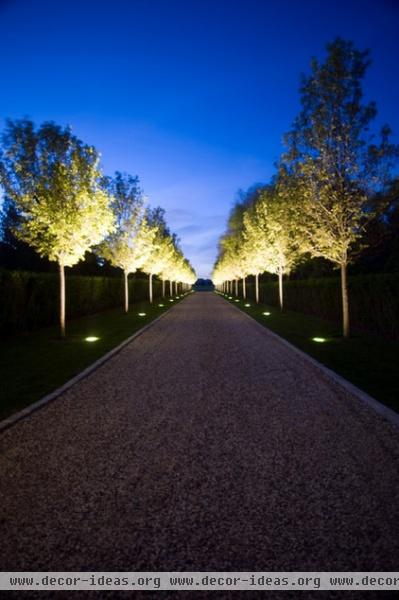
Define a path. Though this path is clearly defined by the landscape, the underlit trees make nocturnal passage unforgettable. Paths — whether they are for cars or people — deserve special attention, since they will be seen most frequently.
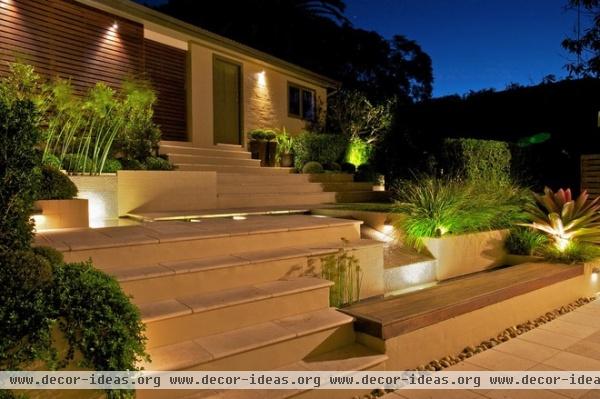
Define layers. This composition of several hardscape elements and plant species benefits from lighting that layers the parts. Fixtures mounted on the house graze the materials and provide overall illumination. Feature plants are highlighted with spotlights, and step lights assure a safe ascent. The waterfall glows from its own lighting.
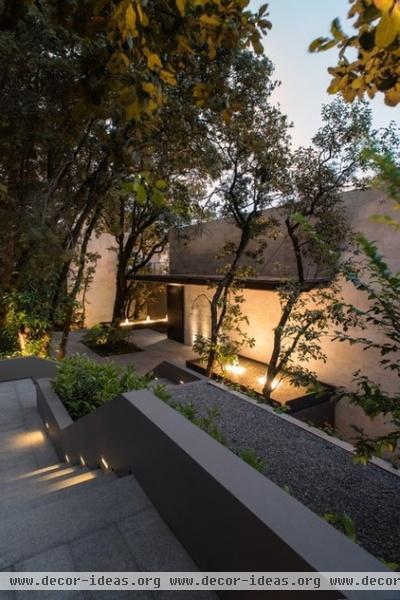
Illuminate water features. Brightly lit fountains along the entrance to this house lure you forward. Concealed wall fixtures emphasize the steps, and strategically placed spotlights within the trees provide a backdrop.
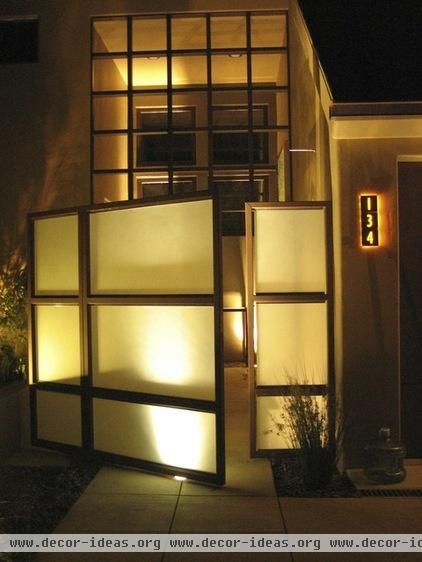
Create a glow. A translucent gate creates an opportunity to make this entrance glow with a warm and welcoming atmosphere. Notice the backlit address fixture also — architectural touches like this contribute to the effect of landscape lighting.
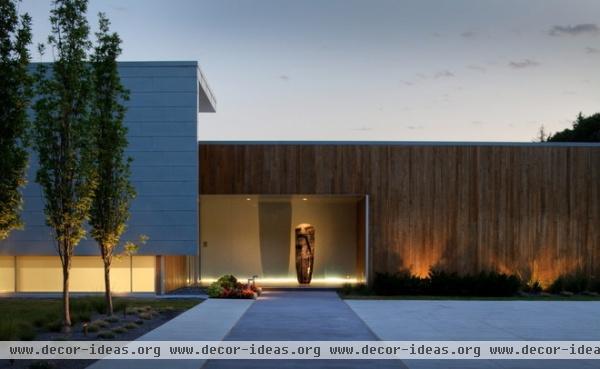
Light the architecture. Not only is the backlit hedge grazing the beautiful wood-clad wall, but it underscores the architecture of this modern design and aligns with the illumination within the glass hall and the translucent windows at the lower left.
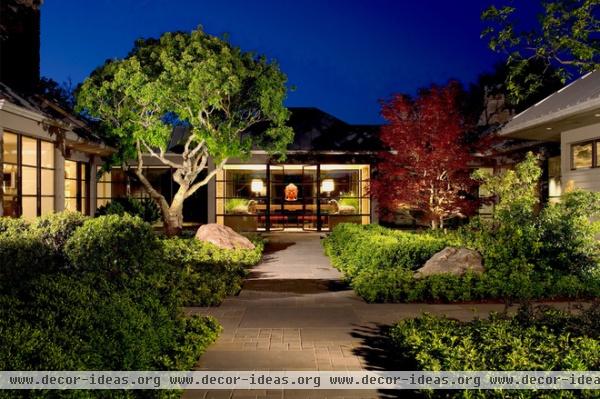
Accentuate color. Several spotlights illuminate this courtyard and emphasize the rich red color of the Japanese maple. Consider that you might want brighter wattage on certain plants to take advantage of their seasonal interest. Always keep in mind the level of brightness a fixture will emit. Too low will not provide enough effect, but too high may burn or wash out the plants’ features.
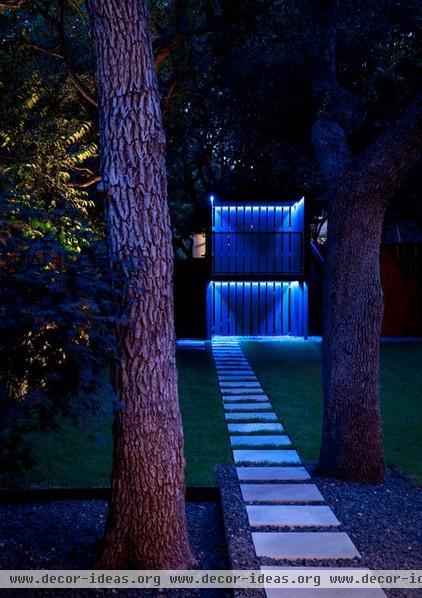
Highlight a space. By day the element in the background here is a kids’ playhouse. In the nocturnal landscape it becomes a brilliantly lit sculpture that changes colors through LED strip lighting.
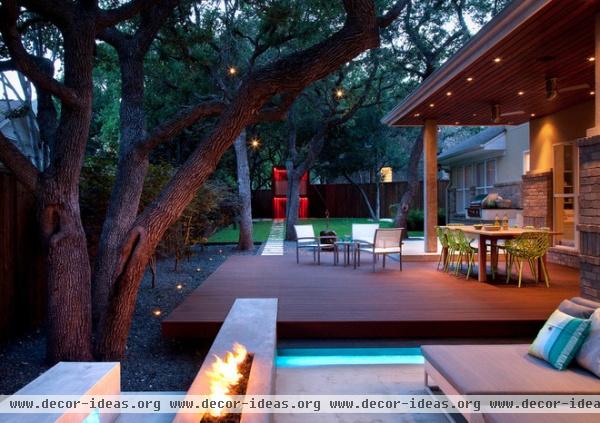
Add the comfort of fire. Outdoor fireplaces have become very popular in recent years. The primal attraction to the flame is irresistible, and the soft yellow glow is comforting. This is another view of the previous example; the playhouse in the distance now glows red from its clever lighting.
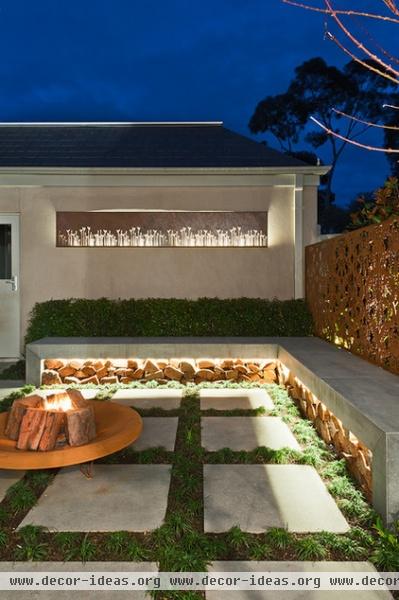
Accent the unexpected. The underside of this contemporary concrete bench provides storage for the fire-pit wood. The surprising lighting underneath visually lifts the bench and provides soft, indirect light.
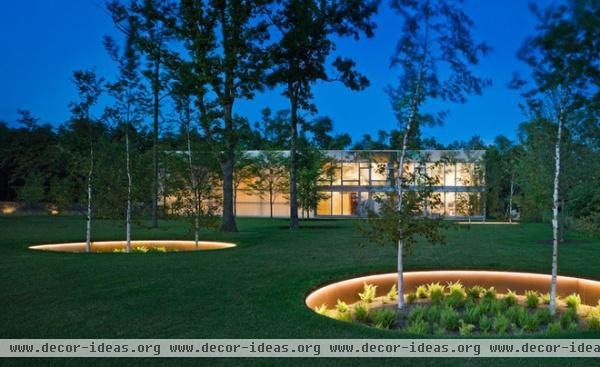
Highlight a well. Consider unusual uses of light within the landscape. Here, strip lights illuminate the perimeter of the sunken tree wells, giving new meaning to the term “pool light.”
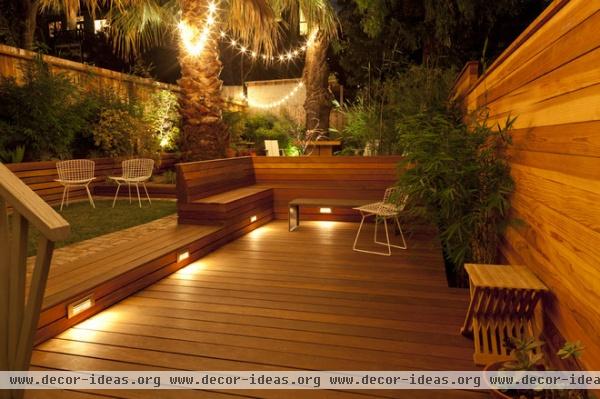
Accentuate steps. Steps and other level changes need good illumination so they can be easily seen and navigated at night. These integrated step lights highlight both the steps and the benches.
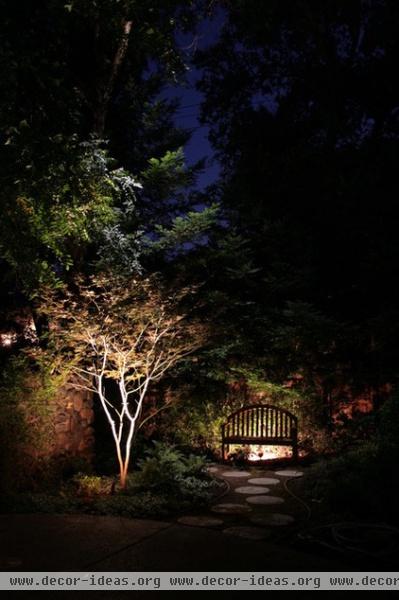
Backlight a shape. Light objects in the distance to celebrate their details and forms. The small tree here has an uplight, and the bench in the background is backlit. A sumptuous effect is achieved by two simple landscape spotlights.
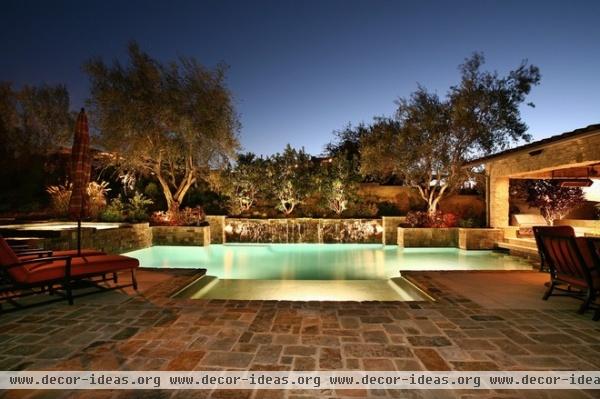
Create a backdrop. This well-lit pool glows with its own light; however, there is significant landscaping beyond its perimeter. While the leaves catch the glow of the pool light, several spotlights extend attention to a few key plants and trees.
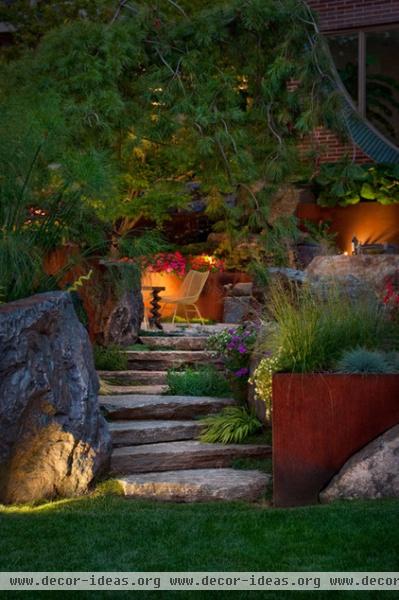
Reflect light. Delicate light can be just as effective as bright light — as well as more soothing and calming. The landscape lighting here is positioned to gently shine on the surfaces of various elements. This reflected light provides just enough illumination for this small area.
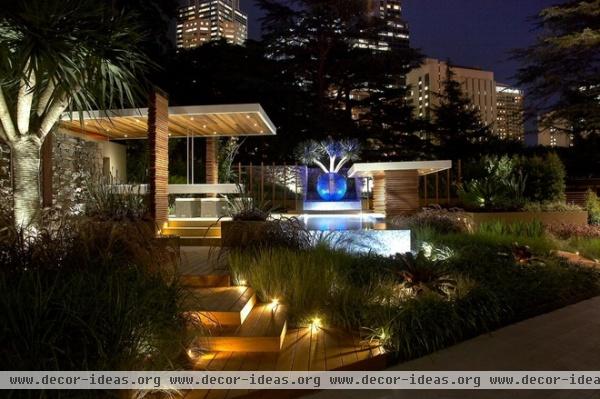
Highlight sculpture. Not only does the spherical sculpture in the distant center deserve illumination, but so do the sculptural plants. This rich setting incorporates several techniques to illuminate the scene, and its focal points punctuate the landscape.
Thinking about adding landscape lighting? A first step is to determine if you have a simple project or if you want professional help. You can use the following lists to home in on what’s important to you and frame the scope of your project.
What you may want to illuminate:
PathStepsTreesShrubsArchitectureSculpturePoolsFountainsWaterfallsTypes of fixtures:
IncandescentFluorescentLEDFloodSpotRopeGroundWallMountedPostTorchFire pitEffects desired:
FeatureDefinitionAccentuateLayerGlowGrazeHighlightAccentPool (congregate)BacklightBackdropReflectMore:
Find landscape architects and landscape lighting designers
Other guides to top home improvement projects












